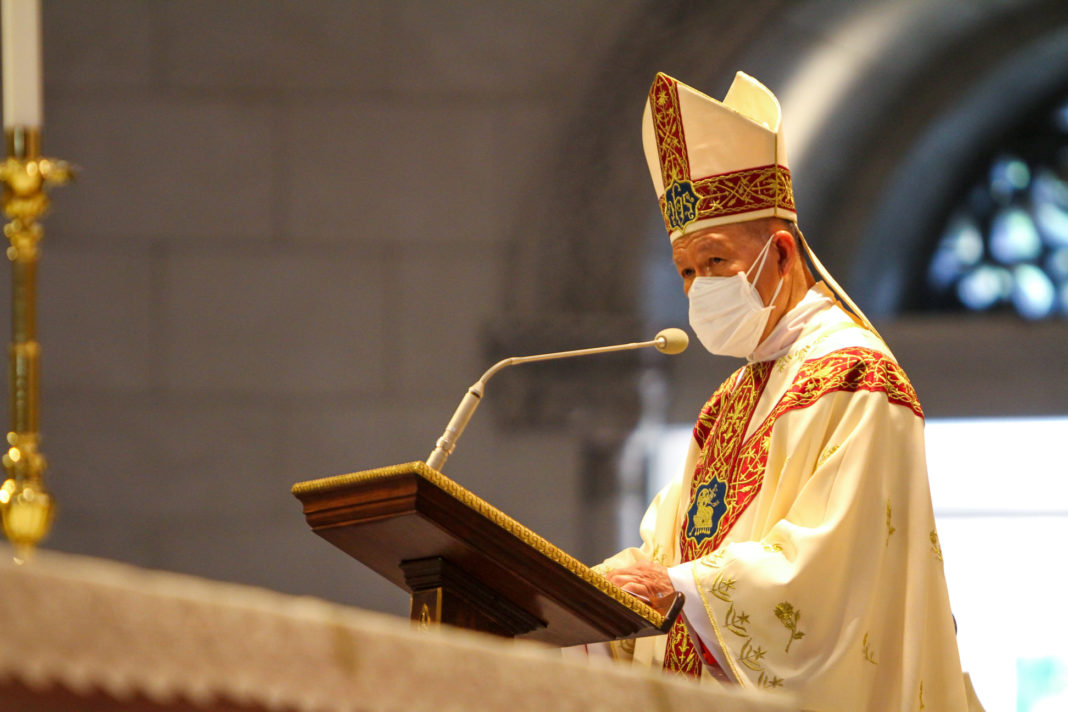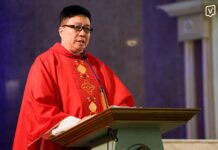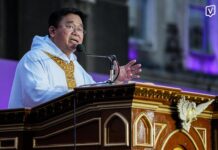MANILA Archbishop Cardinal Jose Advincula vowed to follow the example of St. Dominic in serving the people entrusted to his care, during the Mass marking the 800th death anniversary of St. Dominic at the Santisimo Rosario Parish Church on Aug. 4.
“As I unite myself to you in celebrating this Jubilee, I pray that we may all learn from St. Dominic’s synodal process of preaching, not to glorify [b]ut to share the light of truth to others, especially to the poor, young people, oppressed, and the marginalized,” Advincula said in his homily.
Advincula said St. Dominic inspired him to remain steadfast on his task “whether convenient or inconvenient, constantly teaching and never losing patience.”
He also urged Catholics to emulate St. Dominic’s communal preaching.
“I pray that each one of us in the Archdiocese of Manila, Dominican family, and Church may truly be the salt of the Earth and light of the world, especially in these difficult times… Images of a Christian love that is not directed to oneself but places ourselves generously at the service of others,” he said.
The Thomasian prelate said he was elated that St. Dominic’s legacy of preaching has been kept alive by his successors.
“We can’t ignore the great contributions of the sons of St. Dominic to our country. The Dominican missionaries have truly become salt and light, [who are] faithful to their mission of preaching the Gospel of Jesus,” he said.
“It is providential that we commemorate the 800th death anniversary of St. Dominic in the year the Philippines commemorates the 500 years of the arrival of Christianity in our lives,” he added.
On the eve of the feast of St. Dominic, UST Vice Rector Fr. Isaias Tiongco, O.P. read Advincula’s message.
“I am humbled by the fact that I am the 32nd successor of Domingo de Salazar. I consider myself a son of St. Dominic as I was trained and formed in the University of Santo Tomas Central Seminary in Manila and later in the University of Saint Thomas Aquinas in Rome,” Advincula’s message read.
The theme of the Eucharistic celebration was “At Table with St. Dominic, Preacher of Grace: Gifted to Praise, Gifted to Bless, Gifted to Preach.”
Tiongco also urged Catholics to reflect on the theme for the Jubilee celebration, “A Table With St. Dominic,” which was inspired by the Mascarella table where the first portrait of St. Dominic was painted following his canonization in 1234.
“St. Dominic could teach, inspire and revitalize his sons and daughters with his life and works in order that our own life, faith, hope, and love be renewed in accordance with his ideals and with the universal apostolic character of the Order he joyously founded,” Tiongco said.
“As his witnesses, others too may be nourished by the same spiritual and material resources we enjoy as a religious community,” he added.
Advincula also led the institutional celebration of the Colegio de San Juan de Letran for the 8th centenary of the dies natalis of St. Dominic on Aug. 6.
The Mass at the Manila Cathedral also celebrated the feast of the Transfiguration of Jesus.
St. Dominic died on Aug. 6, 1221 in Bologna, Italy. He was canonized by Pope Gregory IX on July 13, 1234.
Initially, St. Dominic’s feast day was set for Aug. 5 since Aug. 6 was the feast day of St. Sixtus.
His feast day was moved to Aug. 4 when Pope Paul IV made Aug. 5 the feast of St. Mary Major in 1558.
During Vatican II’s reform of the calendar in 1970, his feast day was moved again to Aug. 8, which has remained the date of St. Dominic’s feast since.
In the Philippines, the first Eucharistic celebration for the feast day of St. Dominic was held at Manila Cathedral on Aug. 4, 1587 with Domingo de Salazar, a Dominican, and the first Dominican missionaries who arrived in the country.














